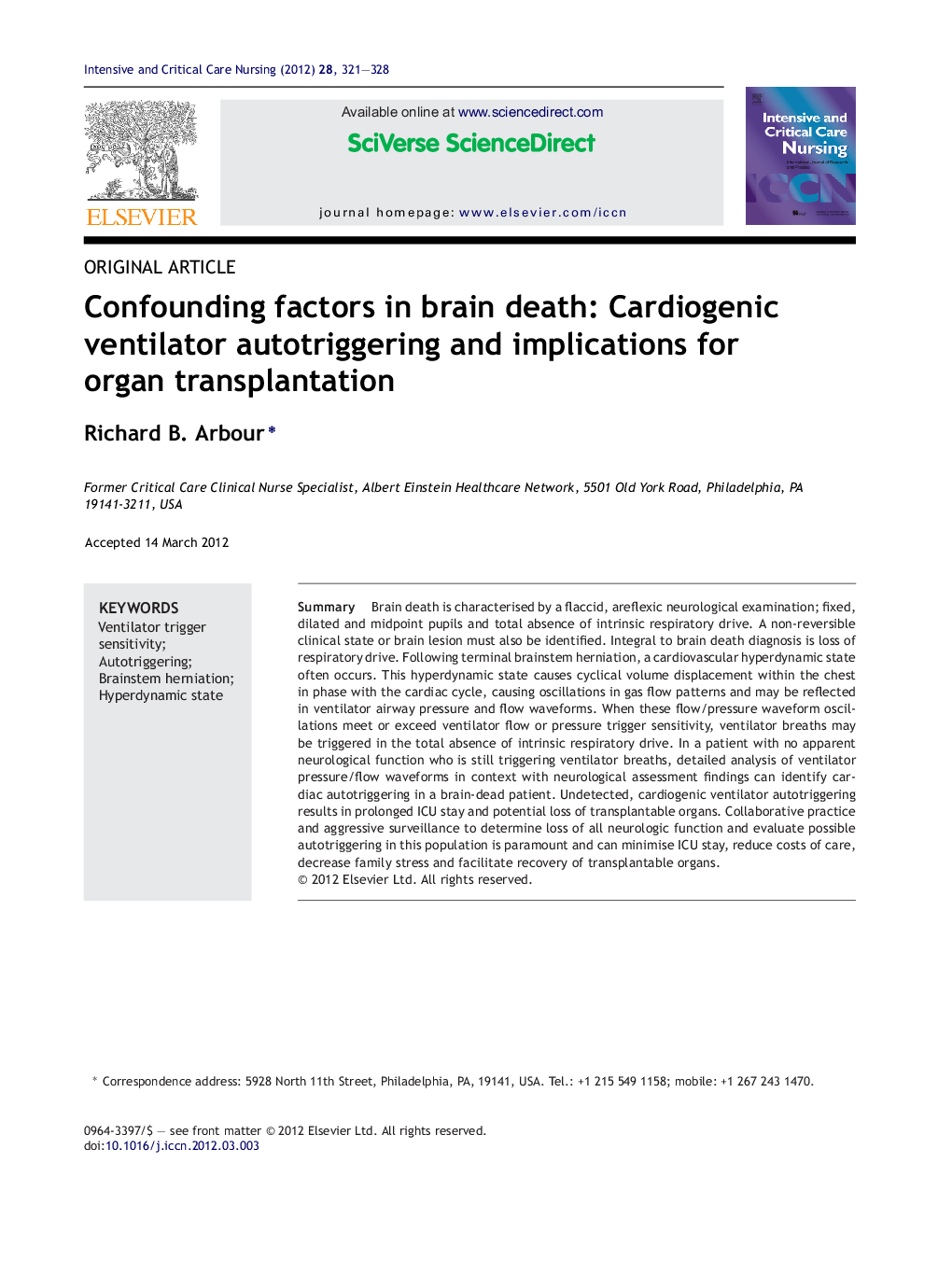| کد مقاله | کد نشریه | سال انتشار | مقاله انگلیسی | نسخه تمام متن |
|---|---|---|---|---|
| 2652207 | 1139600 | 2012 | 8 صفحه PDF | دانلود رایگان |

SummaryBrain death is characterised by a flaccid, areflexic neurological examination; fixed, dilated and midpoint pupils and total absence of intrinsic respiratory drive. A non-reversible clinical state or brain lesion must also be identified. Integral to brain death diagnosis is loss of respiratory drive. Following terminal brainstem herniation, a cardiovascular hyperdynamic state often occurs. This hyperdynamic state causes cyclical volume displacement within the chest in phase with the cardiac cycle, causing oscillations in gas flow patterns and may be reflected in ventilator airway pressure and flow waveforms. When these flow/pressure waveform oscillations meet or exceed ventilator flow or pressure trigger sensitivity, ventilator breaths may be triggered in the total absence of intrinsic respiratory drive. In a patient with no apparent neurological function who is still triggering ventilator breaths, detailed analysis of ventilator pressure/flow waveforms in context with neurological assessment findings can identify cardiac autotriggering in a brain-dead patient. Undetected, cardiogenic ventilator autotriggering results in prolonged ICU stay and potential loss of transplantable organs. Collaborative practice and aggressive surveillance to determine loss of all neurologic function and evaluate possible autotriggering in this population is paramount and can minimise ICU stay, reduce costs of care, decrease family stress and facilitate recovery of transplantable organs.Implications for clinical practice
• Delay in brain death determination may prolong the ICU experience for patients’ families.
• Possible confusion about brain death determination on the part of family members and clinicians’ consequent to cardiac autotriggering may raise false hope of recovery.
• Time required for ICU care and brain death determination consequent to cardiac autotriggering add to financial costs of ICU care possibly exceeding £3000.00 per day.
• Longer ICU management times for potential donors due to ventilator autotriggering increases risk of losing potentially transplantable organs consequent to refractory haemodynamic instability.
• Apparent triggered ventilations consequent to cardiogenic oscillation may lead to the mistaken evaluation that terminal brainstem herniation has not occurred and delay appropriate, mechanism-specific care.
• Time intervals between the terminal event of final brainstem death and final declaration of death by neurologic criteria are of particular concern. Formal brain death protocols may take as long as 6–24 hours, creating a delay between occurrence of final, terminal loss of brain/brainstem function and pronouncement of brain death.
Journal: Intensive and Critical Care Nursing - Volume 28, Issue 6, December 2012, Pages 321–328